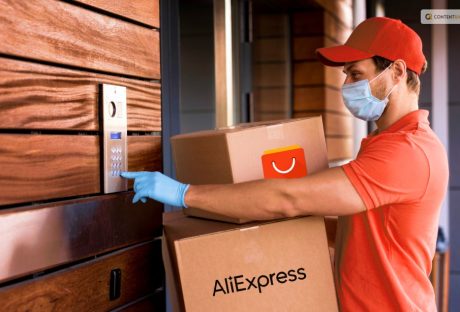Supporting small businesses means you’re not just buying a product — you’re investing in the dreams and livelihoods of local artisans and entrepreneurs.
Small business owners use the money for a plethora of spending. Very few of them are luxury. This is to make mortgage payments and improve their business all the while supporting their inevitable household expenses.
Therefore, by supporting small businesses, and gifting presents with their help, we enable them to keep pouring love into what they do best.
Today’s world is full of mass-produced everything.
So, it’s wonderful to know that there are still people out there who are carefully crafting.
Pouring their passion and care into every item they sell. When you shop at a small business, chances are good that the items it offers come with a story.
A story about the maker or designer who creates it. About the sources of raw materials or about the community from which it hails.
Whatever that story may be, when you give a gift from a small business, you’re giving something special. Something infused with quality, care, and dedication to craft and often an element of tradition as well.
Not sure where to start? Fret not! We’ve got plenty of ideas for everyone on your shopping list:
1. Handmade Goods
You can’t go wrong with gifting presents made by hand.
Yes, your mum would appreciate a one-of-a-kind vase more than any jewelry. Your significant other might enjoy a cozy new knitted sweater this winter.
Did you know artisans rarely get paid enough for all their years of practice? Even after producing one masterpiece after another. Not to mention the carefully honed skills poured into each creation?
In contrast with fast-fashion factory-produced goods (which often have hefty invisible environmental costs), handmade products are ethical.
One produces them with limited quantities on demand using sustainable materials.
Think ceramics made by local potters using clay dug meters away. Again, this also produces limited waste compared to mugs created overseas by coal-powered machines.
Gift handmade, and your recipient is more likely to end up with a fabulous heirloom-quality object to cherish.
So, alongside a great gift, you are also giving something back to the environment.
2. Customized Gifts
Customized gifts are a perfect way to show someone that you’ve put extra thought into their present. Plus, small businesses excel in offering these bespoke services.
Whether personalized jewelry, monogram items, or custom art pieces, these gifts are tailored to the recipient’s tastes and preferences.
Thus making them truly one-of-a-kind. Small businesses often work closely with their customers to create something special, adding names, initials, or even meaningful quotes to the items.
If you were creating a customize get well care package, for example, you can personalize the gift to include the recipient’s favorite comfort items, such as a cozy blanket with their initials or a custom tea blend.
If you’re choosing foods to include, small businesses often offer the flexibility to accommodate dietary preferences. So, make sure to select vegan dishes for vegans or gluten-free options for those with dietary restrictions.
Many small businesses allow you to mix and match items to create the perfect care package, ensuring that each item resonates with the recipient’s needs and preferences.
3. Locally Sourced Products
Locally sourced products are a fantastic way to give gifts that are both thoughtful and environmentally conscious. By choosing items such as gourmet food baskets, artisanal cheeses, or locally roasted coffee, you’re providing high-quality products while supporting the local economy.
Small businesses that focus on locally sourced goods often prioritize sustainability, using ingredients and materials produced nearby, which reduces the carbon footprint associated with transportation.
Locally sourced products tend to be fresher and of higher quality, too, as they don’t have to travel long distances before reaching you. Beyond sustainability, locally sourced items carry with them a piece of the community they come from, offering a story that adds depth and meaning to your gift.
When you buy locally roasted coffee or artisanal cheese, you’re tapping into what makes that region unique, whether it’s the rich soil that grows the coffee beans or the traditional techniques passed down through generations to craft the cheese. It’s a way to share a taste of the place and learn about the history and culture behind the product.
4. Experiential Gifts
Experiential gifting presents offer a unique and memorable alternative to traditional presents. It focuses on creating lasting experiences rather than just physical items.
Tickets to local events, workshops, or cooking classes are excellent examples of experiential gifts that support local artists, chefs, and instructors. These gifts provide an opportunity to engage with the local community and its vibrant cultural scene.
Attending a local event or participating in a workshop can be a great way to support talented individuals and small businesses.
This helps foster creativity and contributes to the vitality of the area. So, if you give tickets, consider buying some for yourself too.
Whether it’s learning a new skill, exploring local culture, or enjoying a special event, attending these events is a meaningful way to support local talent.
Making a Difference with Your Purchases
Making a difference with your purchases extends far beyond the simple act of gifting presents. Supporting small businesses helps sustain the dreams and livelihoods of local entrepreneurs and strengthens the community as a whole.
Each purchase contributes to a vibrant local economy, fosters creativity, and promotes sustainability. When you choose to buy from small businesses, you’re making a positive impact that resonates throughout the community.
As you plan your next gift-giving occasion, consider thinking small and making every purchase count. Your choices support and celebrate the unique offerings of small businesses.
If you’re still unsure of what to choose, a gift card to a local boutique, bookstore, or café is always a thoughtful and flexible option. It encourages recipients to explore and support their local community. Therefore, ensuring that your gift continues to make a difference long after it’s been given.
You May Like Also:






















